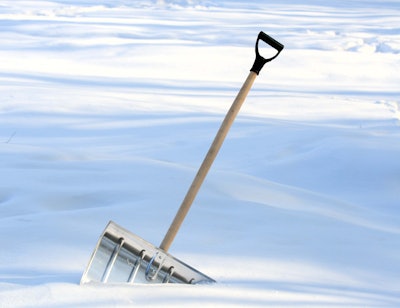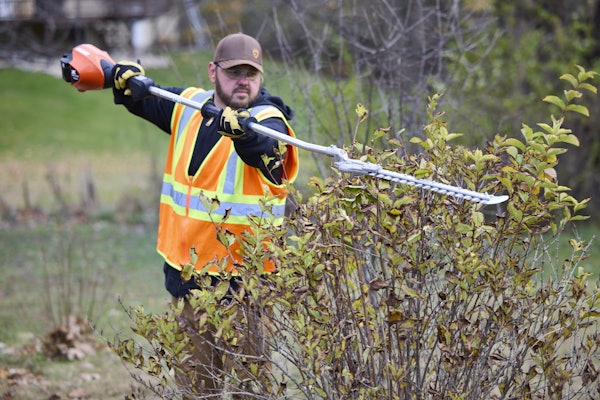
Hypothermia is when body heat is lost faster than it can be replaced, and the body temperature drops below 95 degrees Fahrenheit. While it is most likely at very cold temperatures it can even happen in cool temperatures above 40 F if a person is chilled from rain, sweat, or cold water.
When a person’s core temperature is too low, the body will direct blood away from the skin to reduce the amount of heat lost. It will direct blood flow to vital organs like the heart, lungs, and kidneys.
The heart and brain are most sensitive to lower temperatures making the victim unable to think clearly or move well. This can cause a person suffering from hypothermia to not realize what is happening and do something about it.
Symptoms of hypothermia
Because it can be hard for an individual to realize when they are suffering from hypothermia themselves, use the buddy system so co-workers can keep an eye on each other.
Depending on how severe the case is, the symptoms of hypothermia progressively get worse. Signs of mild hypothermia include shivering, fatigue, impaired judgment, and lack of coordination, according to the American Academy of Family Physicians. The body temperature is anywhere from 90 to 95 degrees F. Other symptoms of mild hypothermia include dizziness, hunger, and nausea.
Symptoms of moderate hypothermia include a decreased heart and respiratory rate, a lower level of consciousness, and a decrease in reflexes. The body temperature at this stage is 82.4 to 90 degrees F.
If the body temperature is less than 82.4 degrees F the person is suffering from severe hypothermia. Signs of severe hypothermia are labored breathing, nonreactive pupils, heart failure, and cardiac arrest.
When a person is at the moderate or severe stages of hypothermia, shivering may stop, they may have slurred speech, be drowsy and have a lack of concern. In some cases, there may even be paradoxical undressing where the victim removes their clothes despite the cold. This is in the later stages of hypothermia where the individual is confused and disoriented.
Treatment
If your co-worker is displaying signs of hypothermia, seek medical attention immediately.
While you are waiting for medical assistance, move your co-worker to a warm, dry area. Remove any wet clothing and replace it with dry clothing. Wrap the entire body in layers of blankets and with a vapor barrier, such as a tarp or garbage bag. Do not cover the face.
If medical help is more than 30 minutes away, give the worker warm sweetened drinks, not alcohol, to help increase the body temperature, if they are alert. Place warm bottles or hot packs in armpits, sides of the chest, and groin. Call 911 for additional rewarming instructions.
If you are trained in CPR you may help a person suffering from hypothermia if they have no pulse or are not breathing. After calling 911, check for a pulse and breathing for 60 seconds.
If after 60 seconds the affected worker is not breathing and does not have a pulse, trained workers may start rescue breaths for 3 minutes. Recheck for breathing and pulse, check for 60 seconds.
If the worker is still not breathing and has no pulse, continue rescue breathing. Only start chest compressions per the direction of the 911 operator or emergency medical services. Reassess the patient’s physical status periodically.
Prevention
Keeping your team safe comes down to prevention. When working outdoors, here are some tips to prevent hypothermia.
- Layer clothing. An inner layer of synthetic fiber such as polypropylene wicks perspiration away from the skin; a middle layer of wool or synthetic fabric absorbs perspiration and retains warmth and an outer layer of nylon protects against wind and allows ventilation.
- If water gets on your body, change into dry gear immediately. Store a plastic bag with extra gloves, hat, socks, and coat in the vehicle that takes you to job sites.
- Find headgear designed to prevent heat loss – hats that also cover the ears and neck and are made of wool or a knit material with a wind-proof outer shell – at sporting goods suppliers and army surplus stores.
- Wear waterproof, insulated boots. Place wool socks, which absorb moisture, over polyurethane socks, which wick away moisture.
- Drink warm, non-caffeinated beverages, and take breaks in a heated space.
If you or one of your crew members become stranded in the vehicle, make sure to move everything you need from the trunk into the vehicle. Run the car for 10 minutes every hour. A winter survival kit should be kept in the vehicle, including nonperishable food, blankets, a first aid kit, water, and a phone charger.











